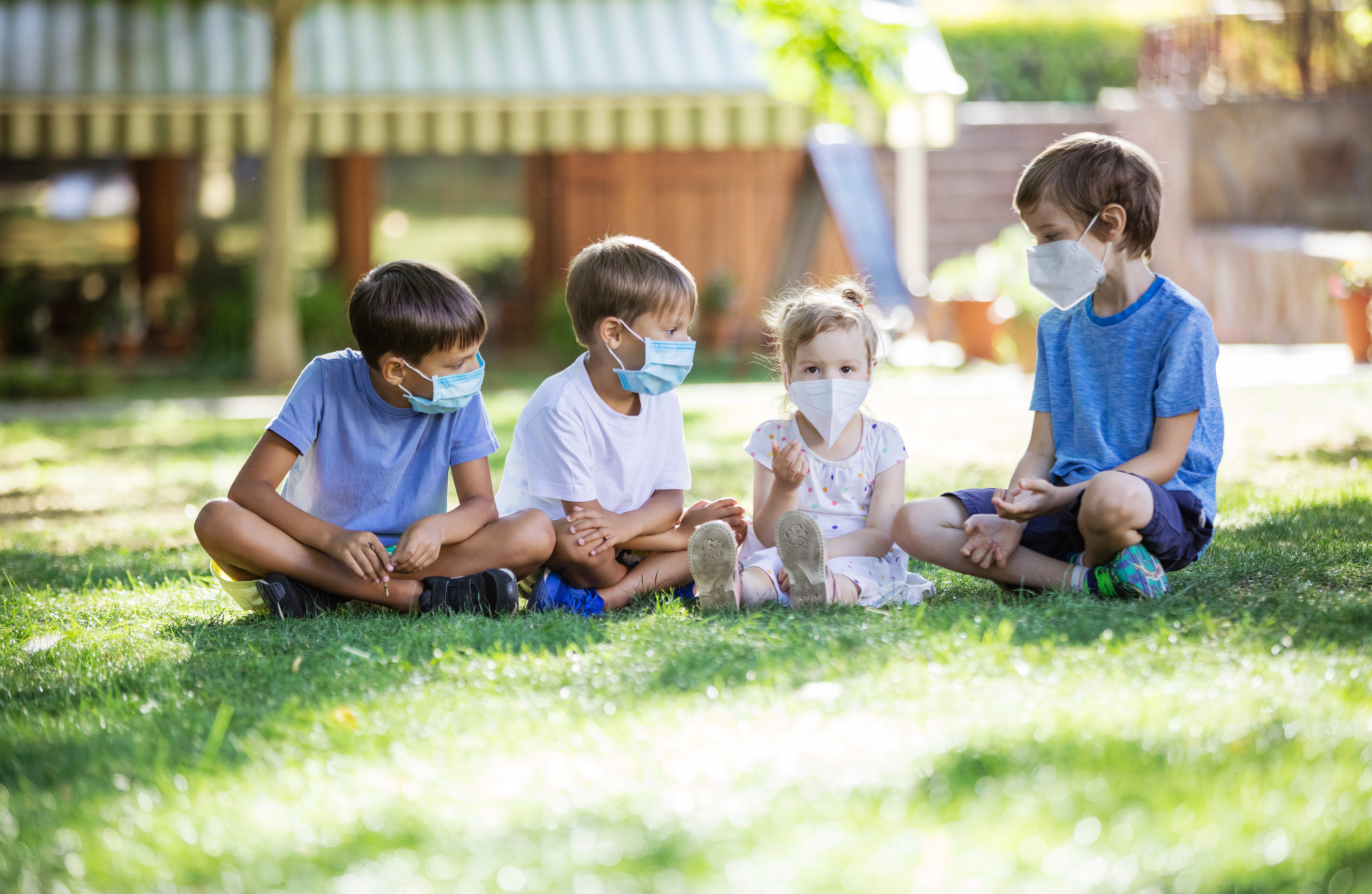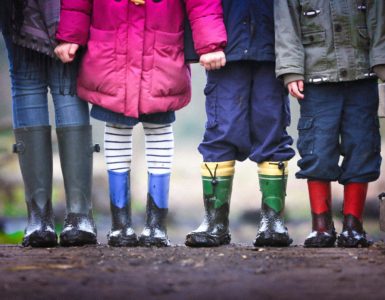The year 2020 brought a great number of complicated situations to the world at large. A global pandemic managed to shut down the world for much of the year as scientists, politicians, and health professionals scrambled to make sense of and then treat the victims of the Covid-19 virus. Businesses shuttered their doors, either permanently or temporarily. Families unexpectedly found themselves homeschooling. Parents struggled more than ever before with work-life balance as they found their workplace and their homes were the same isolating bubble. Even worse, thousands upon thousands of people lost work. There is hardly a business or organization that remained untouched by the overarching impact of the pandemic and the ensuing shutdowns.
Shutdowns that were supposed to only last a few weeks to “flatten the curve” ended up lasting a year or more. As wave after wave of infections overwhelmed hospitals, families became divided both physically and philosophically. Mask orders went into effect and people either lauded the move or became enraged that they were required to wear a mask. The older, more susceptible populations found themselves further isolated. Grandparents in nursing homes could no longer receive visitors because of their increased risk of infection. Nurses, emergency responders, physicians, and many others who could not isolate and were in constant contact with infected patients had few options. They could either live away from their families or perform complicated disinfection protocols before entering their homes. Hospitals were understaffed as those in direct contact with patients became patients themselves. Despite all of this, despite the risks, the danger, the uncertainty, the collective trauma, the collective fear, and the collective exhaustion, something incredible happened in an unlikely place. While the world saw a decrease in nearly everything pleasant, Alabama saw an increase in adoptions!
According to Jill Sexton, who is the clinical coordinator and southern region team leader for Alabama pre- and post-adoption connections, 814 adoptions were finalized, an all-time high record for the state. The number from the previous year was 731. What is even more exceptional is that many of the children adopted were older children in need of a home. According to Mrs. Sexton, the reason appears to be that because of the pandemic, it became more important to people to foster connections where they could: “I think the pandemic has kind of taught us that family is so important and so I think people saw that need.” Mrs. Sexton also expressed this sentiment that I wholeheartedly echo: “To have that many kids achieve permanency with that year of uncertainty and the pandemic is just an amazing feeling …. To be able to have a hand in one of them, let alone a majority of them.” What an incredible situation.
Since April 2020, 2,117 families have called the Alabama Department of Human Resources to find out how to foster or adopt. While some of us were holed up with our kids thinking of running away to some remote island all alone (without success, because there was an active pandemic going on), some families thought “How can we grow our family through adoption?” As a mom of five suddenly thrust into homeschooling four different grades and keeping up with everything else around the house with increased pandemic complications, I can say I certainly didn’t think about how I could further complicate my life. However, many families did, which is extraordinary. One of those families was featured by WSFA reporter Ashley Bowerman.
The Carroll family from Phenix City, Alabama adopted their 15-year-old-son Josiah. Josiah’s new mama, Amber, was happy to talk about her new son. “He has really completed our family …. I’ve always wanted to be a parent of a boy. I have three girls, and I’ve discovered that even teenage boys can be sweet and cuddly.” In describing their love for him, the family said, “We try to give him all the love he could have missed out on throughout his tough beginnings and try to teach him things he hasn’t been taught,” Finally, she said happily, “I’m blessed for him to be here with us.” When the family saw him for the first time, they insist it was “love at first sight.”
There were some complications in the steps toward the adoption due to the pandemic. However on December 22, 2020, Josiah became the older brother to three younger sisters and after waiting for a long time, finally had two loving parents.
Josiah was found by his new family on the Alabama Heart Gallery website. For those unfamiliar with heart galleries, let me explain what they are. Heart galleries go by other names in different states and even different regions in the same state. They are websites that have profiles of adoptable children— actual profiles someone could peruse for hours at a time. Lists upon lists of children with names, birthdays, wishes, and dreams. The websites are restricted access. Typically if you want access you need to create a profile and answer some questions. Then you can look at the profiles. Some include videos, pictures, and short biographical descriptions of the children. Sometimes they will include the type of family the child needs or desires. For instance, a child can say they would like to be an only child. They can request to be part of a large, active family. They may want to be able to adopt a dog. They may want to live on a farm and have chickens. The caseworkers cannot guarantee for the kids that they will get what they want but sometimes the desires can be met by the right families.
Caseworkers can take into consideration a family’s experience with certain behavior needs. While the websites cannot, due to safety and confidentiality reasons, list everything about the child in question, they are often a great launching-off point for families. If a child has ADHD, sensory processing disorder, autism, congenital defects, mental health challenges, or complex medical issues, you will not usually find that out until you submit inquiry forms and receive information from the caseworker. However, seeing a child, a real child with a name and personality, listed on a website as if on a pet adoption website is unnerving. It is also effective. Telling people that there are thousands of older children in need of loving homes can bring vague feelings of discomfort that can be brushed off. It is easy to ignore a problem that you cannot see or don’t want to imagine. Actually seeing children is a different matter entirely. You can look at their faces and see their smiles. You can see the fronts they put up because they want to look tough but really just want someone to love them. The websites have contact information for the caseworker either for the state or the individual child listed. Some of the children are younger, but generally only if they have special needs or are part of sibling groups. The biggest needs are teens, especially teens 14 and over who are close to aging out of the system.
The teens listed are kids that want to be adopted. They want a family, to have a connection to someone for the rest of their lives. As of April of this year, there are 300 plus children in the foster care system of Alabama who are hoping for a loving family
If you are interested in potentially adopting one of these children, there are trainings you need to complete first. This was in some ways made easier by the pandemic because some of the trainings can now be completed online. For the Carroll family, the first visit for introductions with Josiah had to be done over Skype.
In Alabama, a pre-adoption course called TIPS, or Trauma-Informed Partnering for Safety and Permanence, is required. The 10-week, 30-hour curriculum prepares families to make an informed decision about becoming an adoptive family. Speaking from personal experience, having taken part in the Texas equivalent of that class, it is well worth the time and effort. I learned so much about myself and how to best parent children who come from a traumatic background. It is a lot of work though, and some families decide it isn’t worth the effort or they aren’t cut out to be foster or adoptive families after all.
During the pandemic, adoption training was mostly done virtually. APAC is offering the classes both in-person and online right now. If you would like to know the rules and regulations required before inquiring about adoption in Alabama, visit https://adoption.com/alabama
While adoption numbers went up, foster parent numbers did go down dramatically for a while as people suddenly found themselves jobless. There was so much uncertainty about living situations, how long the pandemic would last, and other complications that made it so fewer families were seeking to be foster parents. The state of Alabama is seeking foster parents for an increase in foster children. As the pandemic continued, the added stresses have unfortunately and tragically lead to more child abuse cases. Because children were no longer attending brick-and-mortar school buildings, sports, or other extracurricular activities, the people who would normally be able to keep an eye on them (teachers, coaches, etc.) were no longer able to.
Foster care is less certain an endeavor than adoption and the regulations tend to be more stringent. Monthly inspections, logbooks, and a rotating door of caseworkers, CASA volunteers, lawyers, and inspectors can be an especially daunting proposition in the midst of a pandemic. Consider, however, what it would be like to be a small child during this time. School is closed. You don’t have a computer so you can’t do school. You can’t see your friends, Daddy is always home and is angry all of the time (probably because he’s worried, but being violent has no excuse), Mommy is not paying attention because she is burnt out from being constantly needed, and suddenly a caseworker and police officers come and take you away from everything you’ve ever known. The nice caseworker says they will try to find you a loving family, but all you really want is your mom and your own bed. To add insult to injury, instead of a nice home to go live in, you find out you need to sleep in the caseworker’s office while they hunt for a family who will say “yes” to taking you. She thinks there might be a place for you and the foster parent on the phone seems excited. The caseworker starts to smile but the foster parent asks if you are a boy or a girl. You’re a boy and they don’t want to endanger their girls. Or you’re a girl and they don’t want you exposed to their boys. Another disappointment. Finally, it’s decided that you, at 6 years old, will be spending the night in a motel until someone, anyone, can be found.
If you, as an adult, are wondering how you’d survive that situation, imagine being a child who has no idea that what happening is to keep him safe. Now, can you see why there is a need for a well-trained, caring family to take in these children in their hour of need? Foster care isn’t for everyone, but the need is tremendous. The pay is terrible or nonexistent, and the gratitude a child feels for you will likely never be shown. It’s not fun to sit with a child crying for their mom half the night when you need to get up in the morning and go to work. Yet there is still a need for someone to love these children while they are in transition. If you suppose you are the type of person who can handle this challenge, contact your local child protection services and find out how you could be a foster parent.




